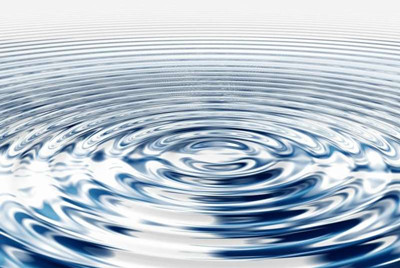
Microplastics are receiving a lot of attention lately due to their difficulty in removal from the environment. Sieves and filtration are currently the predominant way to capture microplastics in water. However, this is impractical because filters clog easily and regularly need to be cleaned or replaced. Another issue is that it has been impossible to collect anything smaller than 0.3 mm, the size of the mesh plankton net pore diameter. This is unfortunate because the majority of microplastics causing havoc are smaller than that, with unknown effects on the eco and biosystems.
A promising new method to collect such microplastics has been devised using acoustics to gather them in water. A bulk acoustic wave (BAW) device was designed and fabricated that channels microplastics, gathering them in the middle channel while water flows out the two side channels. The idea for this study came about when Professor Hiroshi Moriwaki, specializing in environmental analysis at the Faculty of Textile Science and Technology asked Associate Professor Yoshitake Akiyama, first author of the study if there was a way to tackle microplastics in water from an engineering standpoint.
The researchers focused in on the fact that one of the biggest sources of microplastics in our oceans are from laundry machines. A typical laundry machine discharges about ten thousand fibers per one 100 liter washing cycle. Many of our clothes are made of chemical fibers, and tiny pieces of microplastic fibers break off in the washing machine. Wastewater treatment plants are currently unable to capture microplastics.
The researchers decided to create a device that collects microplastics and microplastic fibers by piezo vibrations. By using acoustics at a force and amplitude appropriate for the length, diameter and compressibility of the microplastic, debris collects in the middle of a three channel device. The two channels on the side expel clean water while the microplastic fibers gather in the middle, having been acoustically focused utilizing the piezo element to create the acoustic standing wave. Different types of microplastics have different types of densities, bulk modulus and compressibility which makes for a different acoustic contrast factor (ACF). By choosing the width of the microchannel to be half of the wavelength in water, the particles are induced to gather in the middle of the tube. It took about 0.7 seconds for the particles to be focused in this way.
The researchers ran into trouble when preparing microplastics for the experiment: It was difficult to create microplastics of an appropriate size. At first they tried to use a blender to chop up the fibers to the same length but the plastic fibers would not cut. By asking colleagues in the Textile department, the researchers discovered the Kanehara Pile manufacturer who kindly provided them with materials necessary for research.
For the experiment, a formula was devised to calculate the best acoustic focusing to target microplastic fibers Nylon 6, PET, and polystyrene microparticles. Collection rates were very high, 95% for PET and 99% for Nylon 6 when not accounting for minimal particles that stuck to the walls. The hydrodynamic force aligns the fibers so the BAW device avoids clogging. The particles were tracked using motion-analysis software. For future improvements, the surface of the microchannels could be produced by using methods to minimize roughness and discourage sticking.
Refinements needed for real world applications and scalability involve the use of multiple channels in serial and parallel with different diameters and force to capture all types of microplastics. By adding multiple channels (7 trifurcated, which means 3 to the power of 7) 100 liters of laundry water can effortlessly be concentrated into 50 mL, which would make it easy to throw away or burn. The study used concentrations of microplastic fibers of the maximum expected in real world applications. Current limits to implementations are that the draining process would take a long time.
With this study, PS beads 15 μm in diameter were captured, and in theory, the minimum size of PS beads capable of being captured by this BAW device are 4.3 μm. Smaller beads could be captured with modifications to the BAW device. Most microplastics in waste water have a diameter of 10 μm and length of 2 to 200 μm. The BAW device can successfully capture such microplastics. Further developments in acoustofluidics are needed to capture nanoplastics smaller than 100 nm in diameter.

